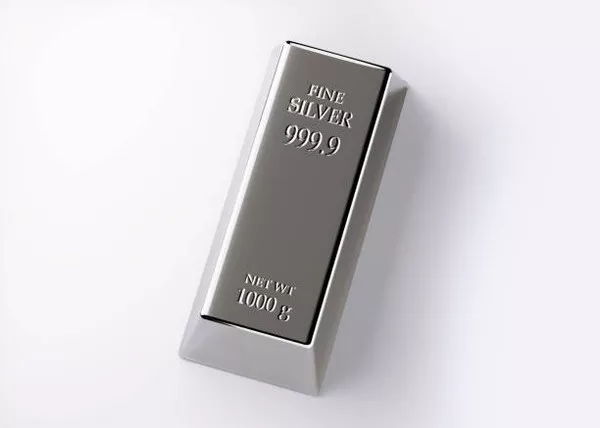Trading silver in the stock market offers a compelling opportunity for investors seeking exposure to precious metals. Silver, renowned for its dual role as an industrial and precious metal, presents unique dynamics in the financial markets. Understanding how to trade silver effectively requires a grasp of market fundamentals, technical analysis, and macroeconomic factors. In this article, we’ll delve into strategies and considerations for trading silver, providing a comprehensive guide for both novice and experienced traders.
Why Trade Silver?
Silver holds a prominent place in financial markets due to several factors:
Industrial Demand: Silver’s industrial applications span electronics, solar panels, and medical devices, contributing to consistent demand irrespective of economic conditions.
Safe-Haven Status: Similar to gold, silver often serves as a hedge against inflation and economic uncertainty, making it attractive during times of market volatility.
Market Volatility: Silver exhibits higher volatility compared to gold, offering traders greater potential for profit through price swings.
Market Liquidity: Silver futures and ETFs (Exchange-Traded Funds) provide ample liquidity, facilitating efficient trading.
Ways to Trade Silver
1. Physical Silver
Investors can buy physical silver in the form of coins or bars from dealers or mints. However, trading physical silver requires storage and insurance, making it less liquid compared to other methods.
2. Silver Futures
Futures contracts allow traders to speculate on silver prices without owning the physical asset. Silver futures are traded on major commodity exchanges and provide leverage, allowing traders to control large positions with a relatively small amount of capital.
3. Silver ETFs
Exchange-Traded Funds (ETFs) like iShares Silver Trust (SLV) and Aberdeen Standard Physical Silver Shares ETF (SIVR) offer exposure to silver prices without directly owning physical silver. ETFs are highly liquid and can be traded like stocks on major exchanges.
4. Silver Mining Stocks
Investing in silver mining companies provides indirect exposure to silver prices. The performance of mining stocks is influenced by factors beyond silver prices, including operational efficiency and exploration success.
Key Factors Affecting Silver Prices
Before trading silver, it’s crucial to understand the key drivers impacting its price:
Global Economic Conditions: Silver demand is closely tied to economic growth and industrial activity.
Interest Rates: Changes in interest rates influence silver prices, with lower rates generally supporting higher silver prices due to reduced opportunity cost.
Inflation Expectations: Silver is often viewed as a hedge against inflation, so rising inflation expectations can drive silver prices higher.
Currency Movements: Silver prices are denominated in U.S. dollars, so currency fluctuations can impact its price for international investors.
Technical Analysis for Silver Trading
Technical analysis plays a vital role in trading silver. Here are some key technical indicators and patterns to consider:
Moving Averages: Use moving averages (e.g., 50-day, 200-day) to identify trends and potential reversal points.
Relative Strength Index (RSI): RSI helps gauge overbought or oversold conditions, providing insights into potential price reversals.
Support and Resistance Levels: Identify key support and resistance levels to determine entry and exit points.
Strategies for Trading Silver
1. Trend Following
Follow the trend by buying when silver prices are rising and selling when they are falling. Use technical indicators to confirm trends and avoid counter-trend trades.
2. Range Trading
Trade within defined price ranges by buying near support levels and selling near resistance levels. This strategy is effective in consolidating markets with clear boundaries.
3. Breakout Trading
Enter positions when silver prices break above or below significant levels of support or resistance. Combine breakout strategies with volume analysis for confirmation.
4. Event-Based Trading
React to significant economic or geopolitical events that impact silver prices, such as interest rate decisions or supply disruptions.
Risk Management
Successful trading requires effective risk management. Consider the following practices:
- Position Sizing: Avoid overexposure by limiting the size of each trade relative to your overall portfolio.
- Stop-Loss Orders: Use stop-loss orders to limit potential losses and protect profits.
- Diversification: Spread risk across multiple trades or asset classes to reduce portfolio volatility.
Conclusion
Trading silver in the stock market presents an attractive opportunity for investors seeking exposure to precious metals. By understanding market dynamics, employing technical analysis, and implementing effective risk management strategies, traders can capitalize on silver’s unique characteristics to generate returns. Whether trading futures, ETFs, or mining stocks, a disciplined approach and continuous market monitoring are essential for success in the silver market. As with any trading activity, it’s important to stay informed, adapt to changing market conditions, and continuously refine your trading strategy to optimize performance and mitigate risks. With these insights, traders can navigate the complexities of silver trading and unlock its potential as a valuable component of their investment portfolio.


